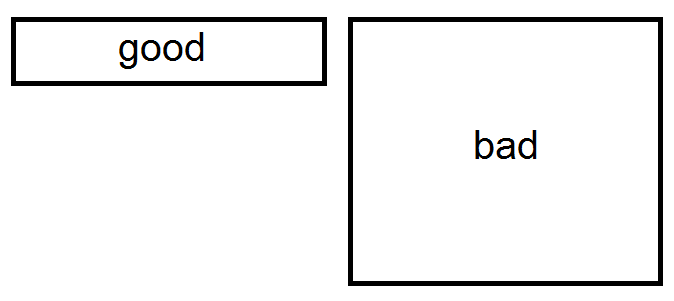Whether you are writing your own unit tests or reviewing ones written by someone else, you can easily assess their quality by the shape of the test methods. You don’t even need to read them.
So What Is The “Rule Of The Shape”?
The best unit test method always looks like a thin, horizontal rectangle, not like a square or a vertical rectangle. That’s it.

Example Of A Bad Test Method
Let’s first consider a bad example of the test method. Note that it has a relative shape of a square.
1 |
|
What is wrong here? Duplicates. The logic which prepares the testing object (together with its dependencies) and the logic which asserts the test results are usually similar for all the test methods. Imagine you made a change in the behavior of the tested object. It will be extra work to go through all the test methods and change the duplicated logic for all of them.
Example Of A Good Test Method
Let’s refactor the above test method. Note how its shape changed.
1 |
|
What did we change? First, we extracted mocks/fakes initialization to a separate method (like model() or renderRequest()). Second, we did the same for the tested object initialization (extracted it to the testedObject()). And, finally, we moved the assertion logic to the method called assertResult(). Now, in case of changes in the behavior of the tested object, you have only one place to change in the unit tests.
And this always happens. Once you get rid of the duplicates, you will end up with the “horizontal rectangle” methods.
To Summarize
Unit test methods should have the shape of a horizontal rectangle. If this is not the case (e.g., they look more like a square or a vertical rectangle), this is a sign that you have duplicates in your unit tests. Refactor.
By the way, this rule can be applied to all methods. Even to classes, though the proportions may be a bit “less horizontal”.